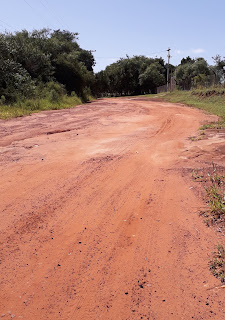Paraguay is home to a great variety of wildlife much of which appeals to everyone. However it is probably fair to say that it might not be a comfortable place for those with concerns about eight legged creatures. Almost everywhere one looks in Paraguay spiders are to be seen. These range from the very smallest right up to large tarantulas, and from the harmless to the deadly. There are web building orb spiders, spiders that string lines between trees like fishing lines, funnel spiders with their dense webs leading down into their lairs and many others that build no webs at all. Orb spiders build their large webs amongst the trees and vegetation and then settle down to await the arrival of their prey. As with all orb spiders these are intricate pieces of art which glisten in the morning dew and are replaced and rebuilt as often as necessary. The sticky stands of silk produced by those spiders who use it cast a line and move from place to place is also quickly rebuilt. The silk...

























